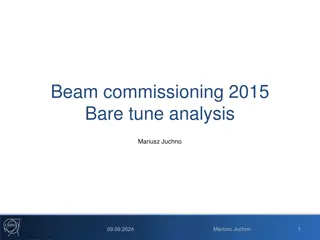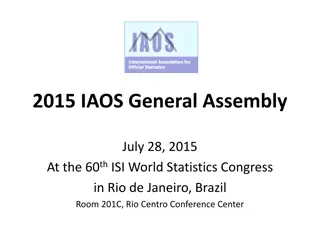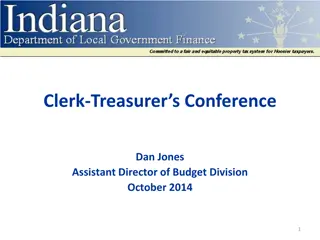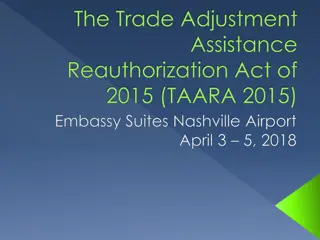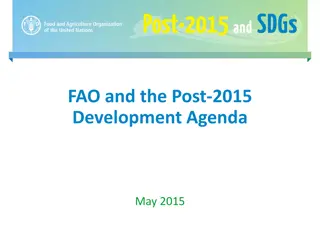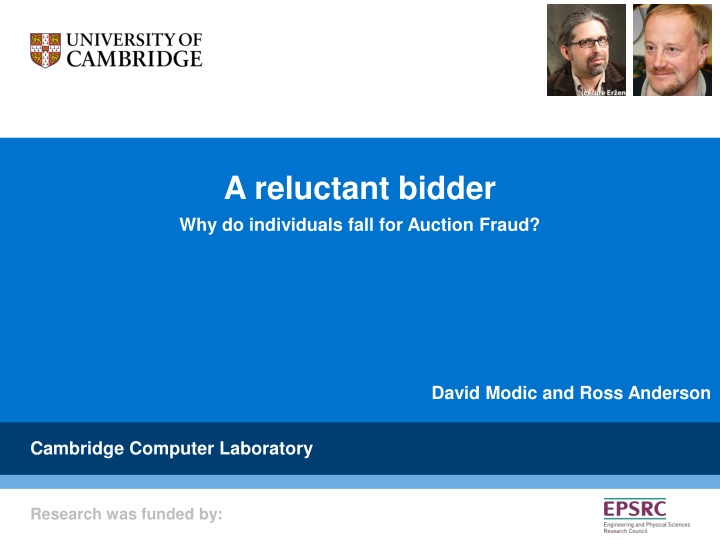
Psychological Mechanisms in Auction Fraud Research
Explore the intriguing link between psychology and auction fraud in this research conducted at the Cambridge Computer Laboratory, delving into the reasons individuals fall victim to fraudulent auctioneers. Learn about the psychological traits influencing compliance, potential losses, and more.
Download Presentation

Please find below an Image/Link to download the presentation.
The content on the website is provided AS IS for your information and personal use only. It may not be sold, licensed, or shared on other websites without obtaining consent from the author. If you encounter any issues during the download, it is possible that the publisher has removed the file from their server.
You are allowed to download the files provided on this website for personal or commercial use, subject to the condition that they are used lawfully. All files are the property of their respective owners.
The content on the website is provided AS IS for your information and personal use only. It may not be sold, licensed, or shared on other websites without obtaining consent from the author.
E N D
Presentation Transcript
A reluctant bidder Why do individuals fall for Auction Fraud? David Modic and Ross Anderson Cambridge Computer Laboratory Research was funded by:
Why Auctions? There is a lot of money in Internet Auctions (eBay shareholder reports show millions of pounds turnover monthly). No one will tell you exactly how much money is lost to fraud, but the sheer number of advisories indicate that the amounts are non-trivial. But. Why would it make sense to look at Auction Fraud from a psychological perspective? Deception research http://research.deception.org.uk
Why involve Psychology? (a) because a number of psychological mechanisms play a part in every purchase. For example: Attitudes towards possessions (Belk, 1988); demand characteristics of money (Lea & Webley, 2006); risk preferences (Zaleskiewicz, 2001) (b) Because there a number of salient traits that influence auction behaviour specifically. For example: Optimism bias (Lovallo & Kahneman, 2003); Hedonic shopping (Overby & Lee, 2006); the thrill of the bid (i.e. sensation seeking; Cheema, Chakravarti & Sinha, 2012 ) (c) Because the potential victims play an active role in the decision making processes involved, thus making their psychological structure salient. Deception research http://research.deception.org.uk
Initial postulates Three cascading stages of scam compliance (Plausibility, Respond, Lose utility). Fraud = illegal marketing offer. Compliance across different categories of Internet fraud is influenced by different mechanisms of persuasion. Victim facilitation (i.e. active role of victim in the process). Deception research http://research.deception.org.uk
The questions (a) what are the salient psychological mechanisms of persuasion influencing compliance with fraudulent auctioneers? (b) what are the particulars of fraudulent auctions? Are there any items that are particularly suited to auction fraud? How much money is lost? etc. (c) Are there any differences in psychological traits across the individuals who respond only and those who lose money? Deception research http://research.deception.org.uk
Two Experiments Study 1 (n = 6609) DV: scam compliance with Auction fraud (four levels: 1 - not compliant, 2 - found Plausible, 3 - Responded, 4 - Lost). IV(s): Susceptibility to Persuasion - II Scale (Modic & Anderson, 2014); and Demographics. Multinomial Regression. StP-II: 54 Items, 10 sub-domains and further 6 sub-sub-domains. StP-II sub-domains: Ability to Premeditate, (Need for) Consistency, Self - Control, Need for Similarity, Att. towards Advertising, (Need for) Cognition, (Need for) Uniqueness, Sensation seeking (Novelty, Intensity), Social Influence (Normative, Informative), Attitudes tow. Risk (Ethical domain, Financial domain). Deception research http://research.deception.org.uk
Two Experiments 2 Study 2 (n=81) Follow up study, contacted cca. 280 self-reported victims of Auction Fraud. DV: Responded or Lost (two levels: 1 - Responded only, 2 - Responded and Lost). IV(s):HEXACO-Brief (60 Items), UPPS-IBS (modified-20 items), Deceptiveness Scale (12 items). Logistic regressions. Deception research http://research.deception.org.uk
Results S1 Overall Compliance rates Auction Fraud - Compliance rates Not Compliant 52.9% (n = 3467) Not AF Compliant 58.9% (n = 3794) Plausible 94.8% (n = 6268) AF Plausible 34.9% (n = 2245) Responded 25.5% (n = 1683) AF Responded 1.2% (n = 80) Lost utility 22.1% (n = 1459) AF Lost utility 4.9% (n = 321) Deception research http://research.deception.org.uk
Results S1 Regressors of Fake Auction Scam Compliance in the Nominal Logistic Regression (n = 6609) B Exp(B) .930 .939 1.164 1.107 1.111 1.060 1.075 1.093 1.251 1.179 1.433 .884 1.243 1.106 Std. Error .025 .030 .025 .020 .028 .019 .028 .034 .103 .084 .123 .050 .053 .060 Wald 8.837** 4.318** 37.472*** 25.505*** 14.232*** 9.086** 6.392** 6.890** 4.728** 3.820* 8.578** 6.188** 16.765*** 2.816* Plausible Consistency Cognition Uniqueness Sensa. Seek. (Intens) Soc. Inf. (Normative) Soc. Inf. (Informative) Risk (Financial) Risk (Ethical) Uniqueness Sensa. Seek. (Intens) Risk (Ethical) Attitude towards Adver. Uniqueness Soc. Inf. (Normative) -.073 -.062 .152 .102 .106 .058 .072 .089 .224 .165 .360 -.124 .217 .101 Responded Lost Note. Reference category is: non-compliant. * p < .1, ** p < .05, *** p < .001 Deception research http://research.deception.org.uk
Results S2 Most Respondents (98% of the sample) were willing to tell us what they bought in a fake auction. The items ranged wildly in price and category. From nappies to apartments. None repeated themselves. Deception research http://research.deception.org.uk
Results S2 Red Flags (Respondents paid attention to when deciding to bid): Description of the Item (61%) The price of the Item (58%) Depictions of the Item (58%) The condition of the Item (57%) Feedback score of the seller (53%) . Other considerations all below 40%. Approximately 50% of the respondents think that feedback is important in general. Deception research http://research.deception.org.uk
Results S2 The amount invested into purchase was skewed: in 60% of the cases respondents used < 1% of their monthly income to buy the auctioned item. Only 4% of respondents invested several times their monthly income. Funds recovery: Only 26% of the respondents attempted to recover their funds. Out of these 26%, approximately 50% got nothing back. The others got back everything (about 2/3 s) or everything w/o P&P (about 1 remaining third). Deception research http://research.deception.org.uk
Results S2 Logistic Regression Model for Personality Traits Influencing the Transition From Responding to Buying (n = 78) B S.E. Exp(B) Wald HEXACO Modesty (HON) Social Self Esteem (EXTR) Sociability (EXTR) Gentleness (AGRE) Flexibility (AGRE) Organization (CONSCI) Diligence (CONSCI) Aesthetic Apprecia. (OPE) Creativity (OPE) 1.812 1.028 -1.193 1.717 -2.034 1.592 -1.497 -1.064 1.762 0.588 0.585 0.507 0.634 0.801 0.579 0.599 0.494 0.605 6.12 2.795 0.303 5.57 0.131 4.916 0.224 0.345 5.826 9.500** 3.083* 5.540** 7.327** 6.440** 7.553** 6.240** 4.640** 8.482** UPPS-IBS Premeditation Sensation Seeking Note. * p < .1, ** p < .05, *** p < .001 NONE of the HEXACO domains was statistically significant as a full construct. -2.197 0.737 0.797 0.434 0.111 2.089 7.601** 2.881* Pseudo R2 (Nagelkerke) = .586 Model Chi-Square = 42.314, p < .001 Deception research http://research.deception.org.uk
Discussion S1 - Plausibility The decision to find an auction beliveable is influenced by many different persuasive mechanisms (Need for Consistency, Need for Uniqueness, Sensation Seeking, Social Influence, Attitudes Towards Risk, and others). This is not surprising. Individuals work hard to believe scammers and because of mechanisms mentioned before, we'll find a way to make a claim beliveable. Individuals who feel no need for consistency, and are not very good at trying to find explanations for events, are more likely to believe scammers. A believer will also be more susceptible to in-group pressures and will be looking to experience new things. Plausible Consistency Cognition Uniqueness Sensa. Seek. (Intens) Soc. Inf. (Normative) Soc. Inf. (Informative) Risk (Financial) Risk (Ethical) -.073 -.062 .152 .102 .106 .058 .072 .089 .930 .939 1.164 1.107 1.111 1.060 1.075 1.093 .025 .030 .025 .020 .028 .019 .028 .034 8.837** 4.318** 37.472*** 25.505*** 14.232*** 9.086** 6.392** 6.890** Deception research http://research.deception.org.uk
Discussion S1 Responding Responding (or bidding) in a fraudulent auction is another matter. Three regressors are significant: Need for Uniqueness (the more forspecial the item, the more likely to respond), Sensation Seeking - Intensity (the thrill of the bid and the stakes) and risk seeking attitude (Financial and Ethical). Responded Uniqueness .224 1.251 .103 4.728** Sensa. Seek. (Intens) .165 1.179 .084 3.820* Risk (Ethical) .360 1.433 .123 8.578** Deception research http://research.deception.org.uk
Discussion S1 Losing Going from responding to losing money in a fraudulent auction, there are three regressors again: Attitude towards Advertising, Need for Uniqueness and Normative Social Influence. Individuals who are sceptical towards marketing are more likely to lose money (once they have responded). They look for Unique deals and are more susceptible to social pressure. Lost Attitude towards Adver. -.124 .884 .050 6.188** Uniqueness .217 1.243 .053 16.765*** Soc. Inf. (Normative) .101 1.106 .060 2.816* Deception research http://research.deception.org.uk
Discussion S1 Conclusion There are very few people who make contact with the seller or start bidding on an item, who do not go through with the transaction (Need for Commitment? Sunk Cost Fallacy?). Those who are looking for Unique Deals, and enjoy the thrill of the chase, transact more and are more likely to be victimized. Ah, but wouldn't then be victimization simply a function of being a frequent visitor to auction sites and thus being exposed? So, no psychology, just frequency. Our data in Study 2 shows that 60% of victims were fairly new users (< 50 transactions), with 30% of that completely new (< 10 transactions). Only 9% of victims did more than 500 transactions on Auction sites. Deception research http://research.deception.org.uk
Discussion S2 - general Our previous research showed that feedback score and spelling were salient in the decision to purchase in a fraudulent auction. The present research showed feedback score to be salient for 58% of respondents but spelling not that much (36%). Temporal effects do not seem to have a strong effect (only 21% of respondents paid attention to how soon the listing will end). Scarcity did not have a large effect (15% think the number of same items with seller are important; and 22% browsed eBay to see how many items are on offer). It pays to open a claim. 50% chance of recovery of funds. Deception research http://research.deception.org.uk
Discussion S2 A number of personality traits are statistically significant in determining whether an individual will progress from responding to losing utility. Deceptiveness scale yielded no significant regressors. This is not surprising. Predilection for truthfulness or lying plays a part in earlier stages of the process (i.e. in the decision to respond). Same goes for Impulsivity. No full HEXACO domains are significant regressors. However, 5 out of 6 domains have significant sub-domain regressors. Take-home message: A number of triggers are at our disposal to lower susceptibility to persuasion. Deception research http://research.deception.org.uk
Discussion S2 A number of sub-domains are inversely correlated (e.g. Extraversion: + Social Self Esteem vs. Sociability; Agreeableness: + Gentleness vs. Flexibility, etc). This needs to be explored in-depth. Premeditation was statistically significant. There are studies showing that this is indeed salient in general scam compliance too. Note that most people who respond also lose. Finding individual differences between responders and losers is significant. Because it can save people from real struggles (both emotional and financial). Small sample size in S2 (n = 81). But these were all genuine (self- reported) victims. And being scammed is a low probability event. Deception research http://research.deception.org.uk
Thank you for listening! Deception research http://research.deception.org.uk
Bibliography Belk, R. W. (1988). Possessions and the Extended Self. Journal of Consumer Research, 15(2), 139-168. Retrieved from http://search.ebscohost.com/login.aspx?direct=true&db=buh&AN=4657059&site=ehost-live Cheema, A., Chakravarti, D., & Sinha, A. R. (2012). Bidding Behavior in Descending and Ascending Auctions. Marketing Science, 31(5), 779-800. doi:10.1287/mksc.1120.0730 Lea, S. E. G., & Webley, P. (2006). Money as tool, money as drug: The biological psychology of a strong incentive. Behavioral and Brain Sciences, 29(2), 161-209. Retrieved from http://ejournals.ebsco.com/direct.asp?ArticleID=42ABA720A8193B174FE0 Lovallo, D., & Kahneman, D. (2003). Delusions of Success. Harvard Business Review, 81(7), 56-63. Retrieved from http://search.ebscohost.com/login.aspx?direct=true&db=bth&AN=10147066&site=ehost-live Modic, D., & Anderson, R. J. (2014). We Will Make You Like Our Research: The Development of a Susceptibility-to-Persuasion Scale. Social Sciences Research Network, http://ssrn.com/abstract=2446971. Retrieved from http://papers.ssrn.com/sol3/papers.cfm?abstract_id=2446971 Modic, D., & Lea, S. E. G. (2011). How neurotic are scam victims, really? The big five and Internet scams. Paper presented at the 2011 Conference of the International Confederation for the Advancement of Behavioral Economics and Economic Psychology, Exeter, United Kingdom. Overby, J. W., & Lee, E. J. (2006). The effects of utilitarian and hedonic online shopping value on consumer preference and intentions. Journal of Business Research, 59(10), 1160- 1166. Retrieved from http://ejournals.ebsco.com/direct.asp?ArticleID=4C7E974A823CEDEBEC0C Zaleskiewicz, T. (2001). Beyond risk seeking and risk aversion: personality and the dual nature of economic risk taking. European Journal of Personality, 15(S1), S105-S122. doi:10.1002/per.426 Deception research http://research.deception.org.uk



